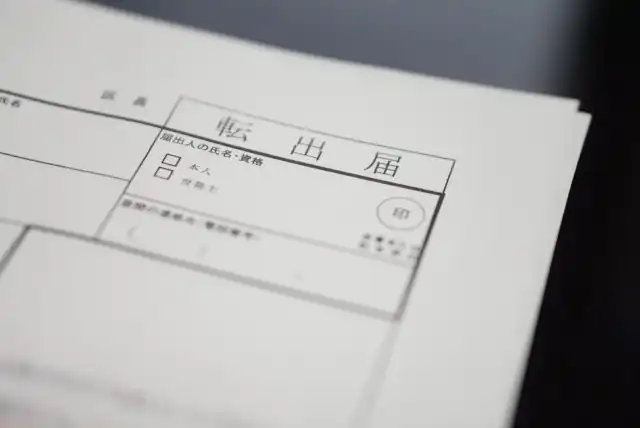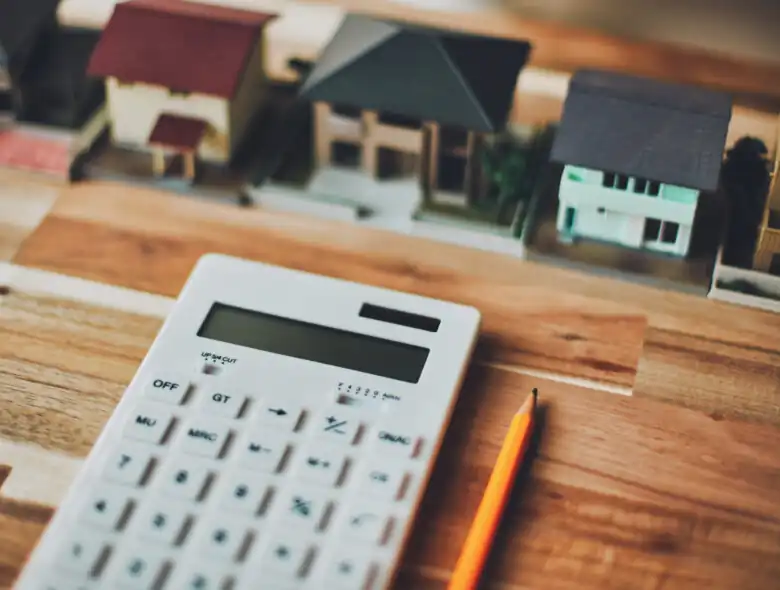Many have questions like, “What will happen to my resident tax if I move?” or “When will I start paying resident tax at my new address?” Some may also be concerned, “If I don’t take the proper steps, will I be charged double?
In this article, we will explain where to pay resident tax (juminzei) after moving and the procedures for different groups, including company employees, sole proprietors, freelancers, and more. By the end, you’ll have a clear understanding of how resident tax works and the steps you need to take.
Village House offers over 1,000 fantastic properties throughout Japan at affordable prices. If you’re searching for a new home, be sure to visit our website and explore our wide selection of options.
What is resident tax?

Resident tax is a combined tax that consists of “prefectural resident tax” and “city, town, and village resident tax,” which are levied on individuals living in a specific area. The prefectural resident tax is set at 4% of your total income, while the city, town, and village resident tax is set at 6%, resulting in a total resident tax rate of 10%. The amount of tax you owe is calculated based on your total income after applying income deductions.
Resident tax is also imposed on individuals with a certain level of income. For example, in the case of salary income, the tax is calculated on the amount of income remaining after deducting the salary income deduction of 550,000 yen and the basic deduction of 430,000 yen. However, note that the higher your total income, the smaller—or even nonexistent—the basic deduction becomes. In other words, if your annual income is 980,000 yen or less, you will not be required to pay resident tax.
Where do I pay my resident tax after moving?

When you move to a different city, ward, town, or village, you will pay resident tax to the municipality of your old address, not your new one. Resident tax is assessed based on your income from the previous year (January 1 to December 31) and is levied by the municipality where you were registered as a resident on January 1 of the current year.
For example, if you live in City A and move to City B on January 5, 2023, you will pay resident tax for 2023 to City A. This is because it was the municipality where you were registered as a resident on January 1, 2023. As a result, even though you’ve moved, you will still receive your resident tax payment slip from City A, your old address.
In other words, the payment destination for your resident tax will change to the municipality of your new address starting from the first January 1 after you move. So, even if you receive a payment slip from the municipality of your old address, there’s no need to worry — this is the correct procedure.
There is no chance of being charged twice

Some people may worry that they will be charged resident tax twice, once by the city, ward, town, or village of their old address and again by their new address. However, there’s no need to worry. It won’t be a double billing. The procedure to change the payment destination of your resident tax will be automatically handled by the city office. That being said, when you move, you are required to submit both a “moving out notification” to your old municipality and a “moving in notification” to your new municipality.
If you fail to submit a moving-out notification or a moving-in notification, you may continue to be charged resident tax by your old municipality, even after you’ve moved. Additionally, if you don’t complete these procedures, you could face a fine of up to 50,000 yen, so it’s important to take action.
Although the days leading up to and following a move can be hectic, it’s essential to submit both notifications within 14 days of your move to avoid any complications and ensure your resident tax is properly assigned to your new address.
How to apply for resident tax

Company employees
If you’re an employee, you might be concerned about how to pay your resident tax. However, there’s no need to worry. Your employer automatically deducts resident tax from your monthly salary and pays it directly to the local government on your behalf. This means you don’t have to take any extra steps to pay the tax yourself; your employer handles it for you.
Typically, resident tax is divided into 12 installments for the year and deducted from your monthly salary. You don’t need to worry about this process, as your employer is responsible for making the payments to the appropriate local government account on your behalf.
Even if you’re an employee, you still need to submit your own moving-out and moving-in notifications to the local government. Additionally, be sure to report your new address to your company. As long as you remember to do these things, you don’t need to take any special steps regarding resident tax.
For those who are worried about what happens to their resident tax if they quit their job mid-year, there’s no need to panic. If the resident tax is no longer being deducted from your salary, you can pay the outstanding amount in a lump sum. Be sure to consult with your company about how to handle this payment before leaving your job.
Self-employed / Freelancers
If the income of a sole proprietor or part-time worker exceeds 1 million yen, you are required to file a tax return and pay resident tax. After filing your tax return, the city office will send you a payment slip, and you must pay the tax according to the details on the slip. There are two payment options: a lump sum payment or four installments, so you can choose the method that works best for you.
In most cases, you will receive a reminder within 20 days after the payment deadline if you haven’t paid. If you fail to pay by the deadline, you will incur a late fee. Ignoring the reminder or failing to keep your installment payment agreement can lead to forced collection measures, such as asset investigation and seizure, so it’s important to avoid this situation.
Paying resident tax is an important civic responsibility. Be sure to check the payment deadline on your payment slip and make sure to pay by the specified date.
Pay your residence tax at a discounted rate with the hometown tax program

If you’re going to pay resident tax, you might want to consider doing it in a way that benefits both you and the region you care about. That’s where the hometown tax donation program (Furusato Nozei) comes in. This system allows you to support a region of your choice by donating to it, and in return, you’ll receive a gift from that area.
When you use the hometown tax donation program, both your income tax and resident tax will be reduced because of the donation deduction. However, it’s important to note that this doesn’t lower the total amount of tax you need to pay; rather, the donation is deducted from your taxable income. Additionally, there is a self-payment of 2,000 yen, so the actual deduction is calculated as a donation amount – 2,000 yen.
At first glance, you might think, “If there’s a self-payment, isn’t it a loss?” However, the system offers a significant benefit. You can receive gifts worth up to 30% of the donation amount. This makes the hometown tax Donation not only a way to support a region but also an attractive opportunity to receive practical, local gifts in return.
Advantages of the hometown tax program

You can receive attractive rewards in return
When you donate to the hometown tax program, you’ll receive a variety of gifts in return from the local government. These gifts often include local specialties such as meat, fruit, rice, seafood, and other regional delicacies. Additionally, some local governments offer unique items like cosmetics, furniture, event tickets, and even travel vouchers.
Donations are tax-deductible
With the hometown tax system, if you donate within the deduction limit, you only need to pay the first 2,000 yen, and the rest of your donation will be eligible for tax deductions and potential refunds. For example, if you donate 40,000 yen, you will pay the first 2,000 yen out of pocket. The remaining 38,000 yen will be eligible for income tax refunds and resident tax deductions.
You can earn points
The hometown tax donation site offers a convenient service where you can earn points based on the amount of your donation. These points can be accumulated and later used to pay for future donations, making the process even more rewarding. Additionally, if you choose to make your donation using a credit card, you can earn points based on the donation amount as well.
You can donate to the local government you support
The primary purpose of the hometown tax is to allow you to donate to the local government you wish to support. One of the key benefits of this system is that you can freely choose which municipality to donate to. There are no restrictions based on your hometown or previous residence.
Disadvantages of the hometown tax program

It does not reduce income tax or resident tax
It’s important to note that hometown tax payments do not directly reduce your income tax or residence tax. Instead, the system allows you to choose which local government receives a portion of your taxes. While it offers tax deductions and potential refunds for your donations, the main purpose is to support the regions you care about, rather than saving on taxes or reducing your overall tax burden.
A self-payment is required
Hometown tax requires a self-payment of at least 2,000 yen, meaning the entire donation is not tax-deductible. Only the amount over 2,000 yen is eligible for tax deductions.
The deduction will occur in the following year
The amount eligible for the hometown tax deduction is based on donations made between January and December of the same year. These donations are then deducted from your income tax and resident tax in the following year. This means that while your donation can lower your taxes for the next year, you might temporarily experience a shortage of funds before the deductions are applied. Be sure to plan your finances accordingly.
Village House offers affordable properties across Japan, with prices starting from just 20,000 yen. If you’re looking for a great deal on a new home, feel free to contact us for more information or to explore our available properties.
Related articles:
- A Foreigner’s Guide to Renting in Japan: Common Pitfalls to Avoid
- The Quintessential Moving Day Guide
- Rental Apartment Woes? Here’s Where to Get Expert Advice!
- Moving With Children: Everything You Need to Know
- I’m Moving! What Should I Do With My Plants?!

Hello, I’m Machiko Doi, a freelance writer who writes about housing and living in Japan.
I live in an 80-year-old house that I inherited from my grandparents along with my two shelter cats and daughter.
We live a relaxed life while repairing the house.
I like to cook vegetables from the garden and fresh fish caught by my father, and enjoy them with cold beer on a hot day or hot sake on a cold day.



